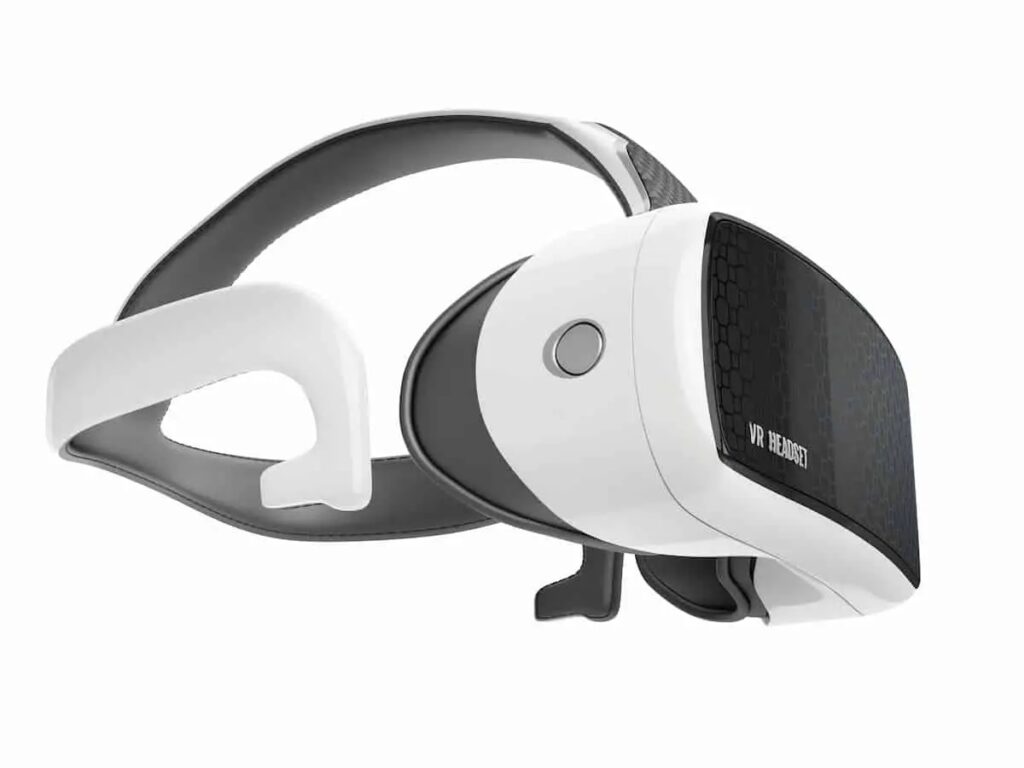Virtual Reality headsets are slowly becoming more popular, but they still have some kinks to work out. One of the most common problems with VR headsets is that they keep disconnecting from your phone or computer. Luckily, there are a few ways to fix this problem.
Here are a few common fixes to prevent your VR headset from disconnecting:
- Reboot the headset.
- Try a different USB port.
- Change USB cable.
- Update USB port drivers.
- Disable USB power saving options.
- Disable USB selective suspend setting.
- Restart your PC.
- Reinstall headset drivers.
- Disable xHCI from bios settings.
- Purchase a powered USB 3.0 hub
- Update your graphics card driver.
- Disable Nvidia GeForce experience in-game overlay.
- Prevent VR headset from using integrated graphics card.
- Set high priority to the OVRServer process in task manager.
- Drain VR headset battery before connecting.
- Factory reset your VR headset.
- Contact customer support.
Owning a VR headset can be pretty incredible when everything works right. Unfortunately, things don’t always go as planned, and you may find yourself with a VR headset that keeps disconnecting. This can be extremely frustrating, and it’s essential to know how to fix it before your entire VR experience is ruined.

1. Reboot the Headset
The first thing you should do is check to ensure your headset is connected correctly to your computer or gaming console. If it is properly connected and you are still having issues, try restarting your device.
To reboot the headset, follow these steps:
- Unplug the headset from the computer or gaming system.
- Remove the faceplate and battery if possible.
- Hold down the power button for 10-15 seconds.
- Put the faceplate and battery back on.
- Plug the headset into the computer or gaming system.
- Startup the VR Headset.
2. Try a Different USB Port
If your virtual reality headset keeps disconnecting, it might be because of a faulty USB port. Try plugging it into a different USB port on your computer.
This is the most common issue when trying to use a VR headset. The headset is not getting enough power, so it disconnects.
The best solution is to try plugging the device into another USB port on your computer. If there are no other ports available, try using a powered hub or an external power supply for your device instead.
3. Change USB Cables
VR headsets are designed to work with high-tech computers and gaming consoles. They have a long cord that plugs into the device, and if it moves too much, this may cause them to disconnect. If this happens, try plugging in the USB cable again and make sure it is connected properly.
If the problem persists, your USB cable might be damaged.
Here’s how to fix the problem:
- Disconnect the USB cable from your computer and headset.
- Inspect the USB connector on your headset for damage. If there’s any damage, you may need to replace the headset.
- Check the USB port on your computer for damage. If there is any damage, you will need to use a different USB port.
- Connect a different USB cable to your computer and headset.
4. Update USB Port Drivers
If your virtual reality headset keeps disconnecting, the problem might not be with the headset at all. It could be that your computer’s USB port drivers are out of date. In this case, you can fix the problem by updating your drivers.
To update your USB port drivers, you’ll need to know your computer’s make and model. Once you have that information, you can visit the website of your computer’s manufacturer and download the latest drivers for your device. After you’ve downloaded the drivers, open them and follow the on-screen instructions to install them
5. Disable USB Power Saving Options
One common reason why your headset is disconnecting is due to USB power saving. This setting automatically shuts down USB ports that are not in use.
To disable USB power saving, follow these steps:
- Open up Device Manager. You can do this by pressing Windows Key + X and selecting Device Manager from the list of options.
- Find Universal Service Bus controllers in the list of devices and right-click on it.
- Select Properties from the menu and then go to the Power Management tab.
- Uncheck “Allow computer to turn off this device to save power” option and click the OK button at the bottom of the window.
6. Disable USB Selective Suspend Setting
The USB selective suspend setting is a power management setting that affects how your computer uses power when it’s connected to a USB device. When you connect a USB device, Windows automatically detects it and configures the appropriate settings.
This setting is designed for devices like keyboards and mice, which are used intermittently. Windows can turn off their power to conserve energy and save battery life on laptops. However, this can pose a problem for more intensive devices such as VR headsets.
To disable the USB selective suspend setting, follow these steps:
- Open control panel.
- Locate the “Hardware and sound” section.
- Under “Power options”, click on “Edit power plan”.
- Select the “Change advanced power settings” option.
- Under “USB settings”, expand the “USB selective suspend” setting.
- Click on disable from the drop-down menu.
7. Restart Your PC
If you’re still experiencing problems with your VR headset, the best solution may be to restart your PC. In some cases, a simple restart can fix various problems with VR headsets.
First, unplug your headset from your PC. Shut down your PC completely, and then turn it back on. Once your PC is booted up, plug your headset back in and try using it again. If the problem persists, there may be a software issue that requires further troubleshooting.
8. Reinstall Headset Drivers
Another possibility is that the problem is with your headset drivers.
To fix this, you’ll need to uninstall and reinstall the drivers for your headset:
- Open Device Manager by pressing Windows Key + X and selecting Device Manager.
- Locate your VR headset under Imaging devices and double-click it.
- Click the Driver tab and then click Uninstall.
- When prompted, click Yes to confirm.
- After the drivers have been uninstalled, restart your computer.
- Download the latest drivers for your VR headset from the manufacturer’s official website.
- You can also download drivers by using Windows Update or manually installing drivers (not recommended).
9. Disable xHCI from BIOS settings
The xHCI controller is a component of the Intel chipset responsible for enabling USB 3.0 ports. This component controls the speed at which data is transferred to and from the USB ports. Disabling this component from the BIOS settings can help fix your VR headset disconnecting problem.
To disable xHCI from BIOS settings, follow these steps:
- Boot up your PC and enter BIOS settings by pressing F2.
- Navigate to Advanced > Integrated Peripherals > System Configuration > USB Configuration.
- Change XHCI Mode to Disable.
10. Purchase a Powered USB 3.0 Hub
Another possible solution is to purchase a powered USB 3.0 hub. This will provide more power to the headset and help keep it connected. Make sure to choose a hub that is specifically designed for VR devices, as some generic hubs may not work properly.
Many computers only have two or three USB 3.0 ports, which might not be enough to support a VR headset and other devices. A powered USB 3.0 hub can fix this problem by providing more ports.
A good USB hub should have four or more ports and a power adapter. It should also be USB 3.0 compatible to ensure high speeds. Look for a hub that is certified for use with VR headsets.
11. Update Your Graphics Card Driver
If you’re still having trouble with your VR headset disconnecting, try updating your graphics card driver. Here’s how to do it:
- Go to your computer’s Start menu and type Device Manager into the search bar.
- Click on Device Manager once it appears in the list of results.
- In the Device Manager window, click on the arrow next to Display Adapters.
- Right-click on your graphics card and select “Update Driver Software”.
- Select “Search automatically for updated driver software”.
- If Windows fails to automatically update your graphics card drivers, you will need to visit our graphics card manufacturer’s official website and manually download the latest drivers.
12. Disable Nvidia Geforce Experience In-Game Overlay
If your VR headset keeps disconnecting, there’s a good chance that it’s because of The Nvidia Geforce Experience In-Game Overlay. This software can conflict with VR headsets and cause them to disconnect. Disabling this feature might fix the issue.
To do this, open up the Nvidia Geforce Experience application and click on the Settings tab. Then, scroll down to the In-Game Overlay section and uncheck the box next to “Enable In-Game Overlay”. Click on OK to save your changes.
13. Prevent VR Headset From Using Integrated Graphics Card
If you have a laptop with an integrated graphics card, there’s a good chance your integrated graphics card is overriding your primary display adapter.
You can disable the integrated GPU to fix the problem:
- Open the Device Manager by pressing Windows Key + X and selecting Device Manager from the list.
- Expand Display adapters and right-click on the integrated graphics card.
- Select Disable device from the menu.
- Restart your computer.
14. Set High Priority to OVRServer Process in Task Manager
The most critical process for the Oculus VR headset is the OVRServer process. This process handles all communications with OVR devices, such as Oculus Rift, Oculus Quest, and Windows Mixed Reality headsets. It’s important to set this process to high priority for it to work correctly.
Raising the priority of OVRServer x64.exe in Windows Task Manager will solve this problem. It will prioritize it over other processes, such as those that may be causing the disconnection issue.
To do this, follow these steps:
- Open the Windows Task Manager by pressing Windows Key + X and selecting Task Manager.
- Go to the Details tab.
- Find the OVRServer_x64.exe process from the list.
- Right-click on the process and set priority to High.
15. Drain VR Headset Battery Before Connecting
If the battery is low, the headset will often automatically turn off, which can cause problems with the connection.
To drain the battery, simply disconnect the headset and wait for the battery to drain. Once it’s completely drained, reconnect it and try using the headset again. If it still keeps disconnecting, there may be a problem with the hardware. In that case, you should contact customer support.
16. Factory Reset Your VR Headset
If your VR headset continues to disconnect, the last thing you can try is to factory reset the headset. This will delete all your saved data and settings, which should hopefully fix the issue.
To factory reset your VR headset, do the following:
- Power off your headset.
- Hold the Power and Volume down button simultaneously for a few seconds.
- Use the volume buttons to select the Factory Reset option.
- Use the power button to confirm Factory Reset.
- Restart Your Headset.
17. Contact Customer Support
If none of the above-mentioned fixes have worked, your last option is to contact customer support.
Here are a few tips on how to get in touch with them:
- Go to the manufacturer’s website and look for a support page or contact form.
- Search for the model of your headset online and find a discussion forum or blog where people are talking about it.
- Call the manufacturer’s customer service line.
- Tweet at the company or send them a message on Facebook.
If customer support is also unable to help, you may need to ask for a replacement for your VR headset.
Conclusion
VR headsets are amazing pieces of technology, but it can be incredibly frustrating when they start to disconnect from your phone or computer. In this article, we’ve walked you through a few possible fixes. Hopefully, they will allow you to resolve the issue, and you’ll be able to get back to enjoying your VR games.







